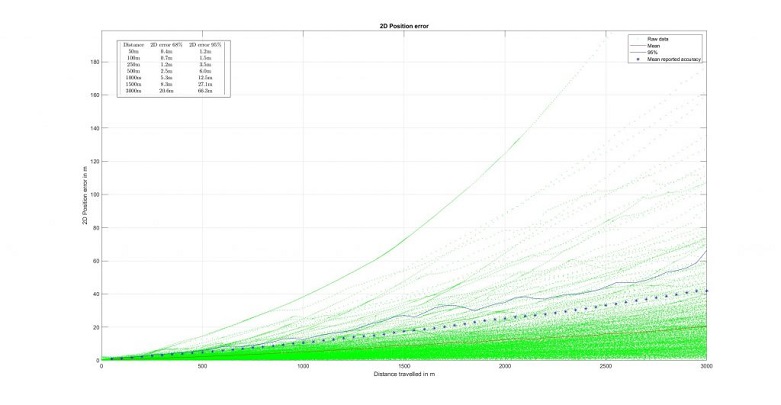Connected Cars: Enabling new paradigm shifts in the Automotive Industry
Why everyone needs to think bigger?
The basic enabler for the Connected Car is mobile network coverage. Without connectivity or with robust connectivity limited to cities the usefulness of the services a Connected Car can provide is limited. Equally important are standards and regulations for safety critical features like eCall and Autonomous vehicles.
Historically, most big innovations in automotive have been the result of concerted efforts on the part of the Original Equipment Manufacturers (OEMs) to differentiate their product and create competitive advantage.
The proliferation of 3G and now 4G in many countries has made it easier for OEMs to market features like remote climate control, journey tracking, “find my car” and so forth simply because the customer can rely on this mostly working… at least in some countries, as long as the car is in an area with mobile network coverage.

One basic ‘health’ enabler is for mobile network providers to extend their coverage so that such features will work in more countries and in more locations outside cities. However, we will need to think a lot bigger than that if we are to move the Connected Car to the next level:
For the intelligent self-driving self-monitoring self-diagnosing cooperative Connected Cars of the future to work, there must be concerted action on the part of governments, standards bodies, OEMs, traditional component suppliers and cloud based service providers.
| The Connected Car of the future is not just a collection of innovations – it truly is a paradigm shift that will fundamentally change our assumptions about cars and our relationships with them. |
There is a new game in town. It is the (next generation) Connected Car. Innovation that differentiates remains important to enable the industry to continue to grow through the traditional leap-frogging of ideas.
Collaboration to agree standards is now essential for the parts of the solution that are too big or too important for individual OEMs to own.Drawing the line in the sand to agree what should be standardized and perhaps even provided as public infrastructure and what should remain in the realm of proprietary engineering to define the boundaries of competitive advantage will be debated but must be agreed.
We want cool new features like more autonomous or self-driving cars and we want the excitement of seeing which OEM will take us in which direction. We also need for there to be laws about how self-driving-cars make life and death decisions – especially where this is a choice between alternative collisions which may cause injury. We also need standards defining how soon-to-be critical data services will be represented and provided to those cars.
Paving the way for Autonomous Vehicles (Self-Driving Cars)
Self-Driving Cars will certainly be a paradigm shift but how will that shift be characterized and how can we safely enable that shift and ensure all the potential benefits are realized?
Autonomous vehicles that can drive themselves have been under development for many years. They are now national trials on public highways in some countries. You can buy vehicles now that have partial control over the driving controls. The Range Rover will adjust your speed depending on the distance from the car in front. The Volvo will follow the curve of the road automatically. The Mercedes and Rolls Royce will preemptively adjust the speed of you car to match the approaching bend in the road.
 Key Challenges
Key Challenges
• Technology enablers to sense and make real-time life-and-death decisions
• Legislation, regulation and licensing for manufacturers and drivers
• Supporting cloud, road, and city-based infrastructure and data feeds
Key Concerns
• Safety and security
• Customer trust
• Liability (if a self-driving car crashes, whose fault is it?)
• How to automate moral judgment calls (e.g. if the car has a choice to avoid one person on a bike or hit a car with four people in it, it will have to make an active decision based on the data)
• Who owns the data?
• Who owns the new sales channels to the customer?
• How should self-driving cars affect insurance premiums?
Conclusions – a call to action for accelerating the paradigm shift
Party: Automotive Manufacturers
Action:
Consider long-term strategy for Connected Car now
Establish a Connected Car team with its own governance
Put more effort into working across OEMs and with industry and governmental bodies and forums
Create or setup a trusted partnership with at least one independent organisation to oversee and QA the end-to-end solution
Rationale:
The technology changes they make in the vehicle platforms and the partnerships they form with off-car cloud based service providers will inevitably be here to stay for some time and difficult and costly to change. All parties have their own agenda. This needs policing.
Party: Cloud Service Providers for Telematics and Infotainment
Action:
Consider what markets you want to provide services in and prepare for the current and impending legislation. This impacts technical solution as well as where physical infrastructure and data must be located.
Rationale:
Vehicle manufacturers have a global customer base and need their connected services to operate globally. Legislation and infrastructure in markets such as China, Russia, South America, and India require specific attention.
Party: Mobile Network Operators, consortiums and standards bodies such as the GSMA, 3GPP, ETSI
Action:
Standardize mobile communication networking globally and extend coverage. Consider how to improve robustness and make routing and billing more flexible and granular.
Rationale:
Connected Cars rely heavily on connectivity for most of their critical functions. They have many functions with different commercial models. Utility of a Connected Car is impacted heavily by network coverage. The cost and complexity of the solution is adversely impacted by multiple inconsistent telecommunication standards globally.
Party: Governments
Action:
1. Grant licenses for testing self-driving cars now so that the specific needs of your country legislation, landscape, and culture are taken into account.
2. Consider the driver licensing and product and service regulation you will require when self-driving cars are standard.
3. Consider what centralized infrastructure should be provided to support self-driving cars and smart cities and what if any should be funded or supported by the Government.
Rationale:
• Self-driving cars are coming.
• In the short term they will cause disruption and wide-ranging headlines.
• In the future they will reduce road congestion, pollution, global warming and accidents and associated healthcare costs as well as increase efficiency, workforce productivity and hence GDP.
• These cars will be much safer and richer in how autonomous they can be if road infrastructure and signage and government agency owned data relating to local road setup and legislation is complete, consistent, up-to-date and in a usable form.
About the author


